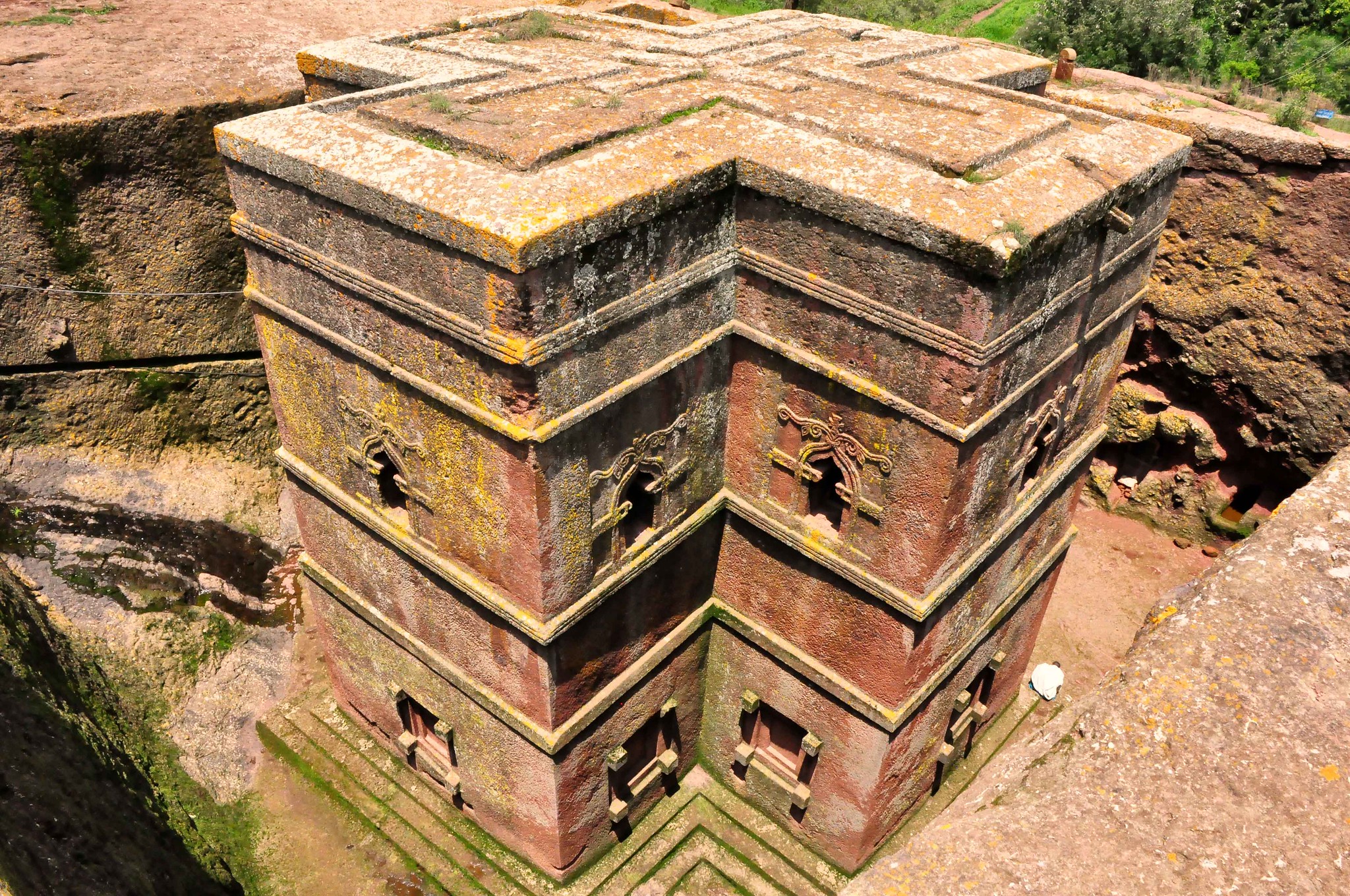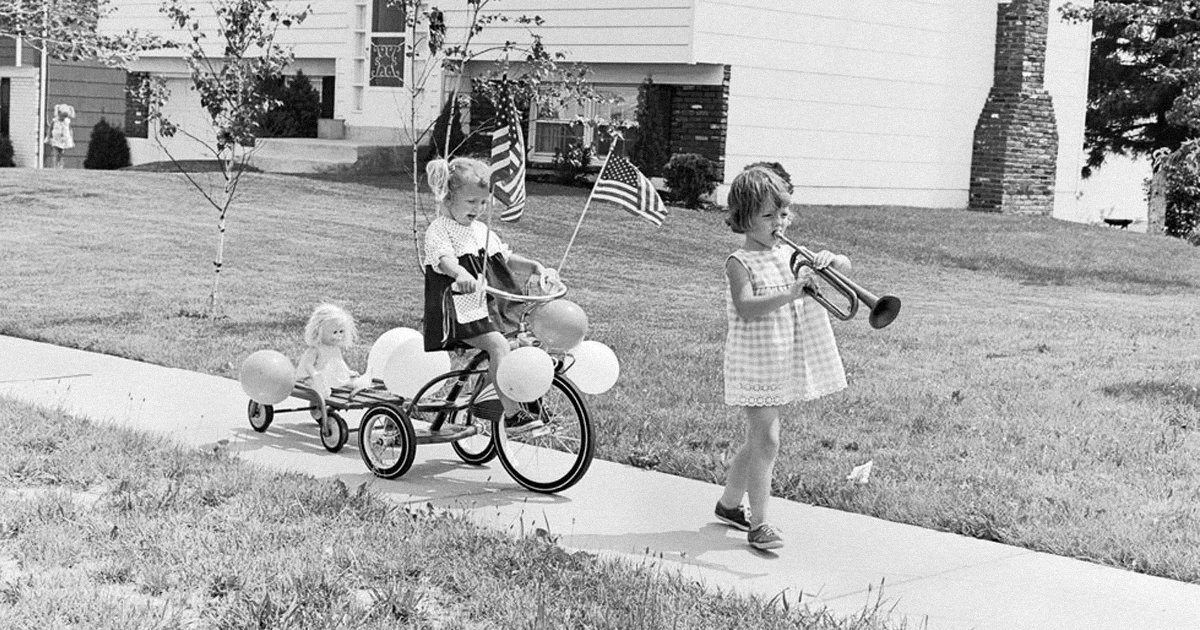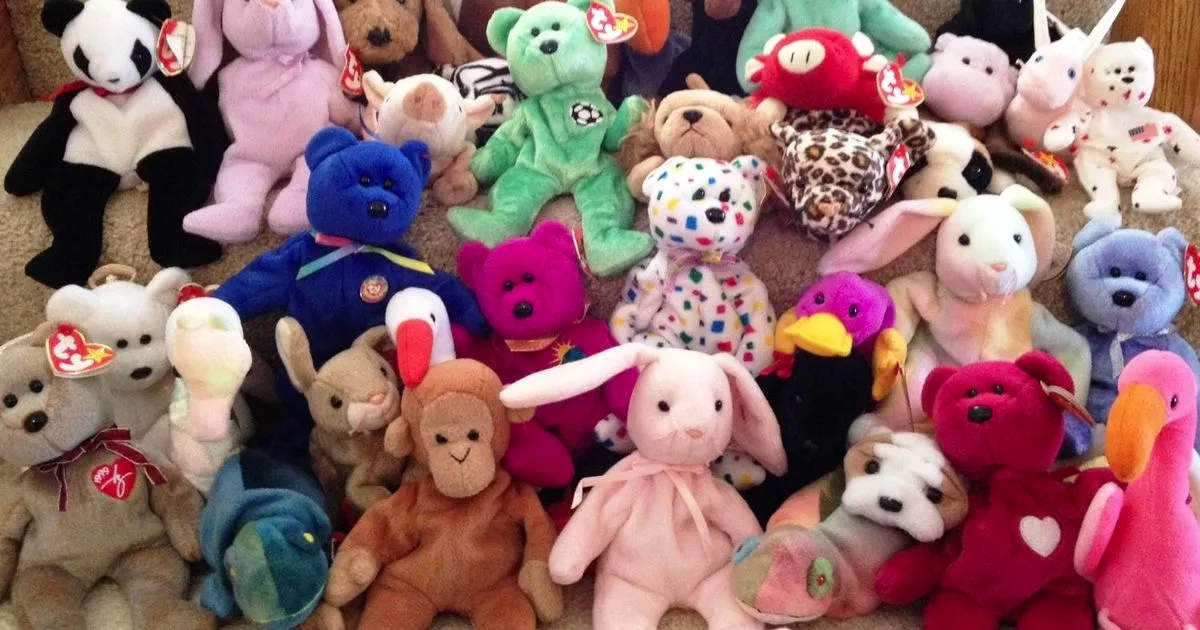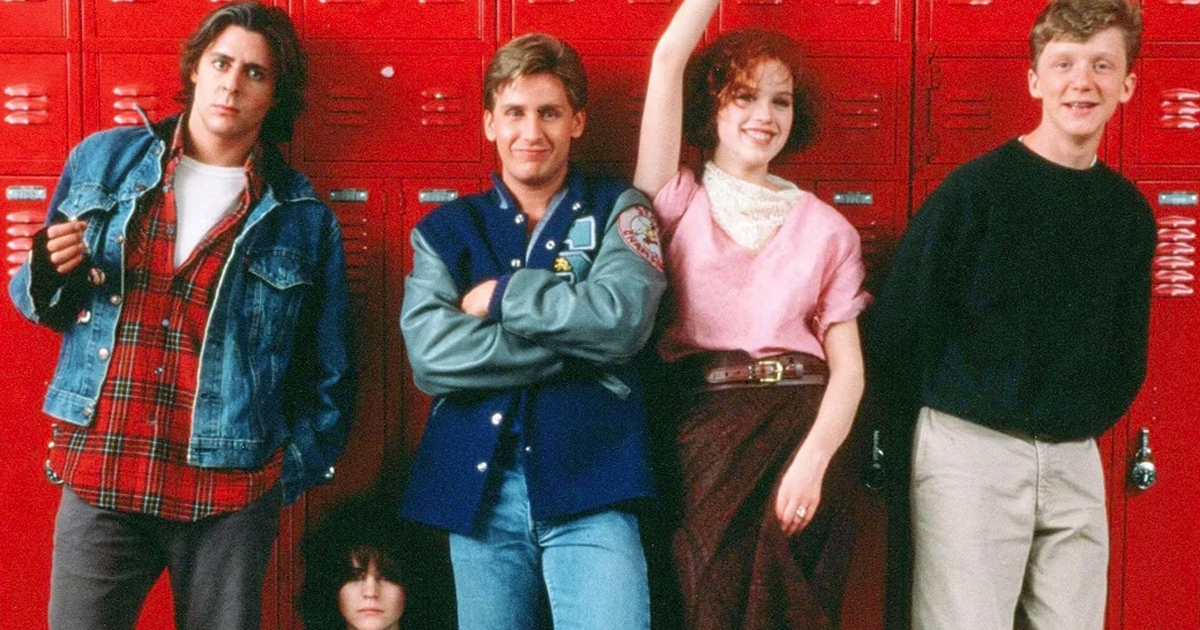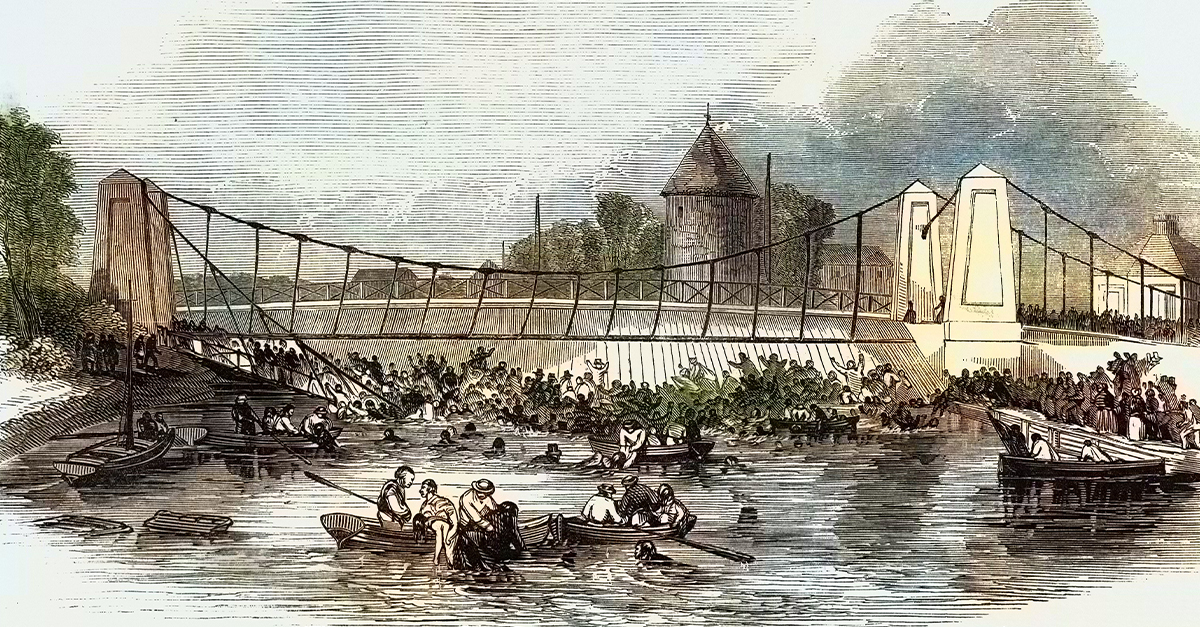Awesome Archaeological Sites Around The World
The world is filled with incredible reminders of our history. Some have been unearthed recently, and others stand tall as can be, edifices to our shared human experience. These awesome archaeological sites hold fascinating tales of how our ancestors navigated the world and what they left behind for us to uncover.
For the young kid in all of us who was fascinated by history, or those who watched Indiana Jones and thought about how cool it might be to be Indy—let's dig into some of the world's most amazing archaeological sites.

The Temples Of Ramesses II
Located at Abu Simbel in Aswan, Egypt lay four glorious statues of the ancient Egyptian Pharaoh who commanded the Egyptian armies at the height of the Empire. Surrounded by his Queen Consort, Nefertari, and his children at his feet, the Temples of Ramesses II is an unmissable sight if you're traveling to Egypt.
 Diego Delso, CC BY-SA 4.0, Wikimedia Commons
Diego Delso, CC BY-SA 4.0, Wikimedia Commons
The Acropolis
Translating to "highest point" in English, the Acropolis is one of Athens' (and the world's) most iconic landmarks, standing high above the city. The site consists of around a dozen buildings, all built between 500 and 450 BCE, on the orders of Greek statesman Pericles.
 Stymphal, CC BY-SA 4.0, Wikimedia Commons
Stymphal, CC BY-SA 4.0, Wikimedia Commons
The Parthenon
The Parthenon is one of the most famous buildings of the Acropolis. It's a gigantic jigsaw puzzle consisting of 70,000 pieces, dedicated to Athena, the Greek Goddess of Wisdom. Although you'll struggle to find a time when the Parthenon isn't crawling with tourists, its overall majestic nature, despite the ravages of time, is still awe-inspiring.
 Jakub Hałun, CC BY 4.0, Wikimedia Commons
Jakub Hałun, CC BY 4.0, Wikimedia Commons
The Theater Of Dionysus
This ancient amphitheater is situated on the south side of the Acropolis. Built during the 6th century, the ancient theater could seat 17,000 people and was often used to display the tragic plays of the Greek greats: Aeschylus, Sophocles, Euripides, and Aristophanes. These plays mostly took place during the Festival of Dionysus, the Greek God of wine-making and food.
 Carole Raddato, CC BY-SA 2.0, Wikimedia Commons
Carole Raddato, CC BY-SA 2.0, Wikimedia Commons
The Temple Of Angkor Wat
Built between 900 and 1300 AD, Angkor Wat is one UNESCO World Heritage Site not to be missed. The splendor of the temple can't be ignored, despite its setting in the middle of a large forested area just outside of Siem Reap, Cambodia. The ancient Buddhist and Hindu temple was built during the reign of Suryavarman II and covers an area of 163 hectares.
 Kheng Vungvuthy, CC BY-SA 4.0, Wikimedia Commons
Kheng Vungvuthy, CC BY-SA 4.0, Wikimedia Commons
The Former Glory Of Ayutthaya
Before Bangkok became the capital of Thailand in 1782, this stunning city was the capital of the Thai kingdom's power and authority. Built in 1350 AD, Ayutthaya stood for centuries until 1767, when an invading Burmese army ransacked and destroyed much of the city. Ayutthaya's ruins are still visible today and any visitor to Thailand should soak in this cornerstone of Thai history.
Impressive Preservation At Baalbek Temple
One of the best examples of preservation of history in the world is Baalbek Temple. Built by the Romans during the 1st century BC in what is now Lebanon, Baalbek sits up high, overlooking the valley below, containing two temples: one to Bacchus and one to Jupiter. The site has undergone two name changes during its time: it was called "Heliopolis" during the time of the Romans, but the current name derives from the Phoenician sky god: Baal.
Calakmul Temple
Located in the rainforests of the Amazon lies Calakmul Temple, an ancient Mayan-built site that is over 2000 years old. Built in 100 BC, the temple was occupied for almost 1,000 years until the Mayans abandoned the temple during the collapse of their power in the region around 900 BC. As it has been largely claimed by the rainforest (and the macaws, toucans, and jaguars), Calakmul isn't the most accessible of ancient ruins, but for those who make it, it's an unforgettable experience.
 PhilippN, CC BY-SA 3.0, Wikimedia Commons
PhilippN, CC BY-SA 3.0, Wikimedia Commons
Temple In A Cave In Dambulla
Ever thought about building a temple in a cave? It sounds like something from The Raiders Of The Lost Ark, but this temple in a cave actually exists in Dambulla, Sri Lanka. Built during the 1st century BC, the Dambulla Cave Complex houses 80 individual caves and is home to over 150 priceless Buddha statues. It also has a still-functional monastery that dates back to the 2nd century BC.
 Kaushiru90, CC BY-SA 4.0, Wikimedia Commons
Kaushiru90, CC BY-SA 4.0, Wikimedia Commons
Paleolithic Pandemonium At Chauvet Cave
First discovered in 1994, Chauvet Cave sits in the Auberge-Rhone-Alpes in France and is home to ancient Paleolithic carvings and paintings of bison, lions, wooly rhinoceroses, and horses that are estimated to have been painted 36,000 years ago. Due to the unfortunate cave entrance collapse some 20,000 years ago, the original carvings have been largely inaccessible to large groups. In 2015, the French government opened the world's largest replica cave, including a gallery showcasing a film detailing how the original artists would have worked on the paintings and carvings.
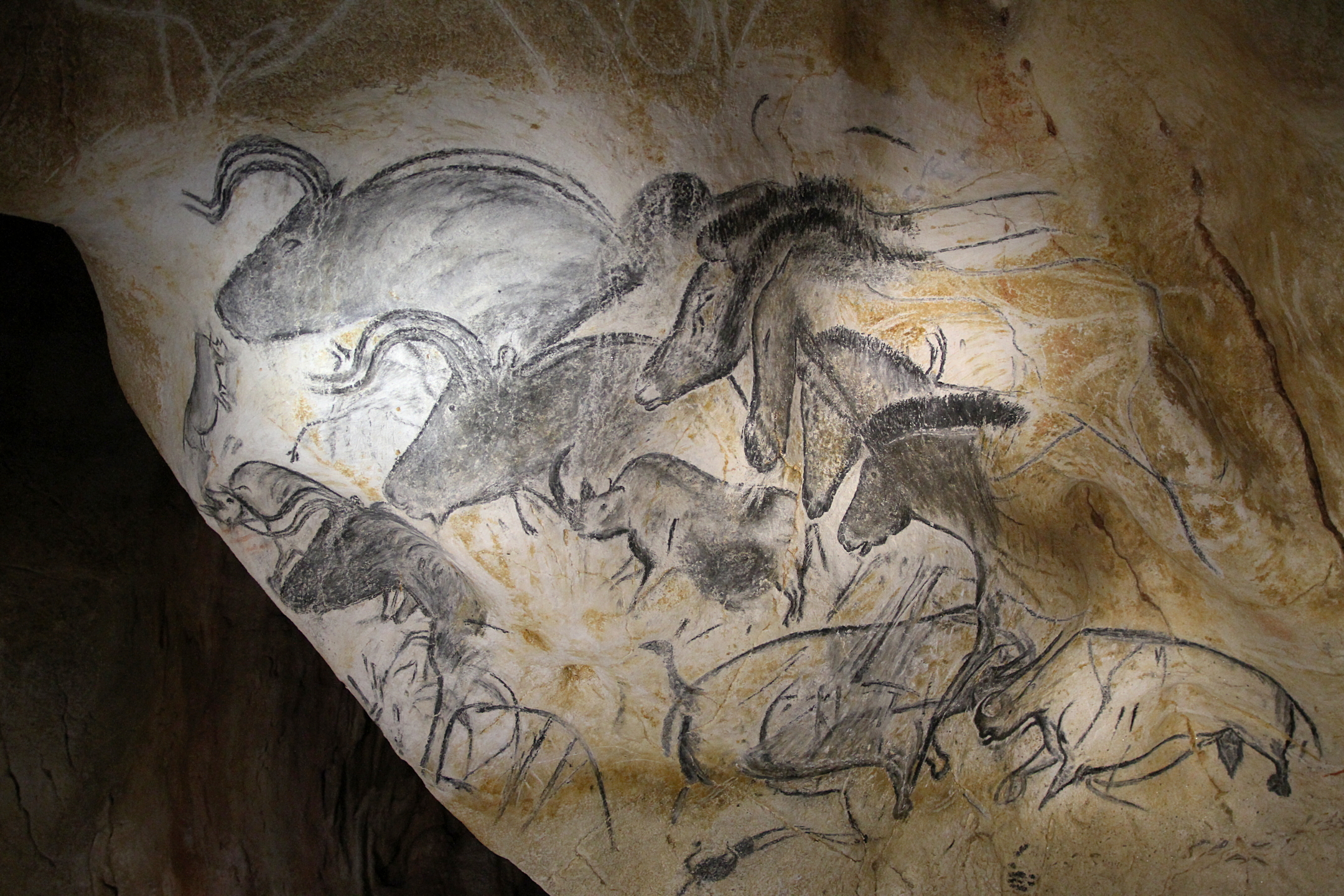 Claude Valette, CC BY-SA 4.0, Wikimedia Commons
Claude Valette, CC BY-SA 4.0, Wikimedia Commons
Chichen Itza
The UNESCO World Heritage Site of Chichen Itza is among the most famous of Mayan cities and is home to the world-famous Callisto Pyramid, a perfectly-proportioned pyramid built (along with many other temples) between 750 and 1200 AD.
The Church of Lalibela
Located in Amhara, Ethiopia, the Church of Lalibela has the unique distinction of being dug out of volcanic rock. Ordered to be built by King Gebre Meskel Lalibela in the late 12th century, workers had to dig down into volcanic rock before intricately building the church. Lalibela is recognized as a patron saint by local Christians and his church is still a popular pilgrimage site.
Citadel Of Aleppo
Despite the tragedy of the Syrian Civil War and the damage done by the 2023 Turkey-Syrian earthquake, the Citadel of Aleppo (built some 3,000 years ago) has seen many cultures and peoples come and go from the area: the Romans, Byzantines, Greeks, and Ottomans have all captured and lost the City of Aleppo. Of particular beauty are the stunning stone bridge entrance, Ayyubid Palace, and the ancient steam bath known as a 'hammam'.
 Bernard Gagnon, CC BY-SA 3.0, Wikimedia Commons
Bernard Gagnon, CC BY-SA 3.0, Wikimedia Commons
Colosseum Of Rome
Of course, the incredible Colosseum of Rome had to be on our list; built in 72 AD by the Emperor Vespasian, the Colosseum could house 50,000 spectators and was the site of the Roman gladiator games. Much of the Colosseum remains intact today and is one of the most recognizable historical sites in the world.
 Diliff, CC BY-SA 2.5, Wikimedia Commons
Diliff, CC BY-SA 2.5, Wikimedia Commons
The Underground City Of Derinkuyu
The Turks built the Underground City of Derinkuyu in 1180 BC, digging down to an extraordinary 85 meters deep and building multiple levels into this vast expanse of archaeological wonder. Visiting the spectacular underground city today means trekking through lamp-lit tunnels and entering large open areas, where more tunnels lead to chambers and what we assume may have been storerooms. The city once housed 20,000 people.
 Nevit Dilmen, CC BY-SA 3.0, Wikimedia Commons
Nevit Dilmen, CC BY-SA 3.0, Wikimedia Commons
Diocletian's Palace
Another reminder of ancient European history is Diocletian's Palace in Split, Croatia. The seafront promenade of Split now lies in front of the ancient palace—built in 305 AD by the Roman emperor Diocletian as a retirement home. The emperor had the best view in town, with the apartments overlooking the sea, while his soldiers and servants took up residence in the rest of the property. Several building styles were later erected inside the walls of the palace and it remains one of Split's must-see attractions.
Ecclesiastical Ephesus
The Ancient Greek city of Ephesus, located in modern-day Selçuk, Turkey, was founded during the 10th Century BC by the Attic and Ionian Greeks. With newly-restored facades and towering columns typical of Greek and Roman Architecture, the city features a stunning roman bath, temples, and the Library of Celsus.
 Laszlo Ilyes, CC BY 2.0, Wikimedia Commons
Laszlo Ilyes, CC BY 2.0, Wikimedia Commons
The Giza Plateau
The Great Pyramids of Giza, of course, had to be on our list. Built in 2500 BC, these stunning examples of accomplishment (despite regrettably being built by slaves), are one of the most famous architectural and archaeological sites in the world. They welcome millions of tourists every year, where the complex houses a giant sphinx, several cemeteries, and tombs of the ancient Pharaohs.
 Morhaf Kamal Aljanee, CC BY-SA 3.0, Wikimedia Commons
Morhaf Kamal Aljanee, CC BY-SA 3.0, Wikimedia Commons
The Great Wall Of China
The Great Wall of China stretches from the ocean to the desert north of Beijing, constructed over centuries by various Chinese Emperors to protect their territory from invading armies and other dynasties. Qin Shi Huang first built a unifying wall in 220 BC—much of it remains standing to this day. Sections of the wall were rebuilt during the Ming Dynasty (1368-1644) using stronger materials. It is 21,196km long and is the longest wall in the world.
Kailasa Temple
Built in 770 AD, the Kailasa Temple was carved out of the rockface in the 8th century by the Indian King, Krishna I, as a homage to the Hindu God of Destruction, Lord Shiva. This incredible megalith was dug 33 meters downwards, from the top. Talk about hard work.
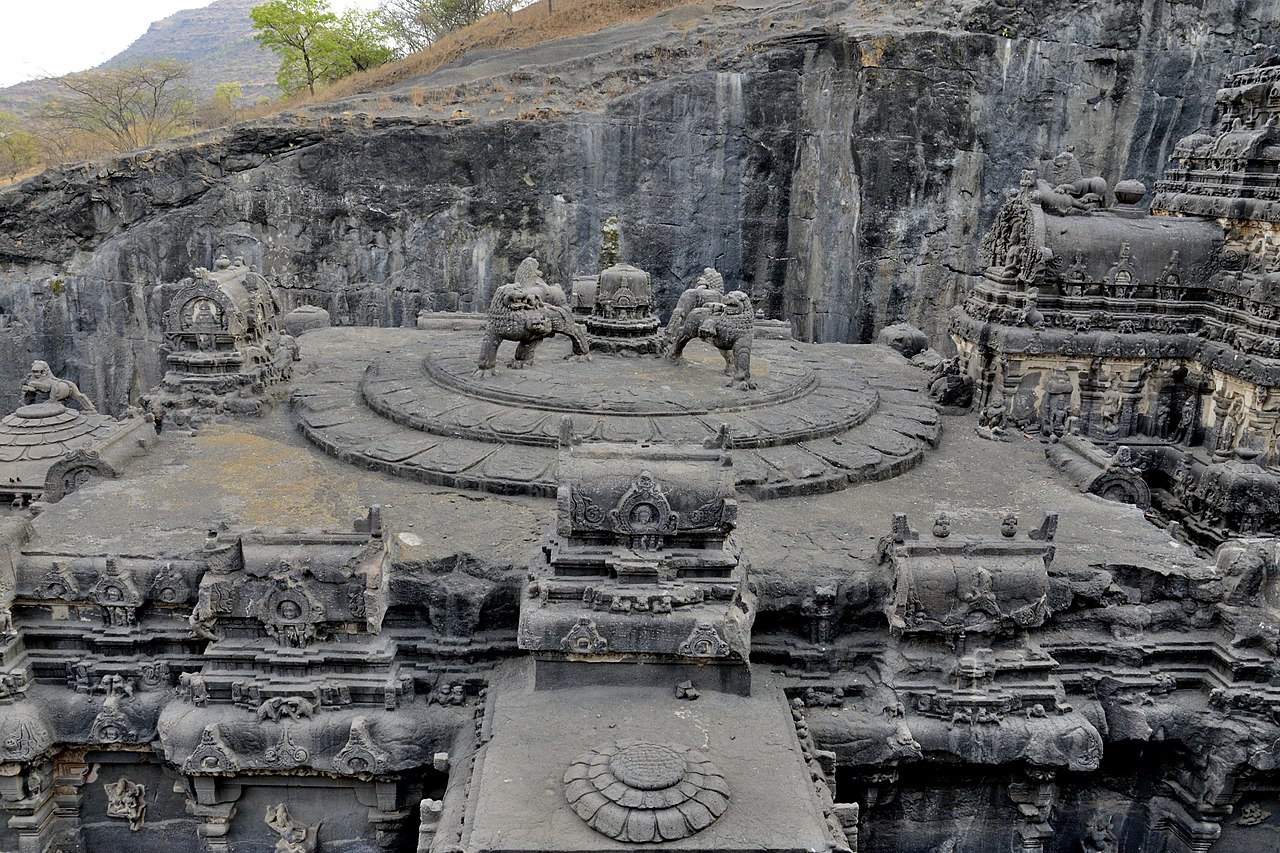 Sharvarism, CC BY-SA 4.0, Wikimedia Commons
Sharvarism, CC BY-SA 4.0, Wikimedia Commons
Machu Picchu
This world-recognized historical site needs almost no introduction, but for those who don't know: Machu Picchu was built in 1400 AD and lay undisturbed and untouched for centuries, swallowed by the rainforest of Cusco, Peru. Until, that is, Hiram Bingham (a National Geographic explorer) "re-discovered" the city in 1911 (with the help of the locals). This iconic archaeological wonder attracts tens of millions of tourists each year and has one of the greatest views on earth.
 Zielonamapa.pl, CC BY-SA 2.0, Wikimedia Commons
Zielonamapa.pl, CC BY-SA 2.0, Wikimedia Commons
Easter Island's Moai
Easter Island's famous "Maoi", meaning statue, were carved by the ancient Rapa Nui people between 1250 and 1500 AD. Inspired by the faces of the ancestors of the Rapa Nui people, the largest of these stone carvings weighs a stunning 82 tons and stands 10 meters tall. Just imagine transporting them... Ouch.
Petra's Mountainous Carvings
Petra, Jordan is one of the main attractions of this ancient and incredible country. Dated to the 4th century BC, Petra was a city belonging to the Nabatean People—an ancient Arab peoples that inhabited northern Arabia and the southern Levant. When the Nabateans left Petra during the Crusades, they carved intricate details into the rockfaces of the surrounding mountains and cliff faces. The city was left abandoned and untouched until it was rediscovered in 1812 by Swiss explorer, Johann Burckhardt.
Pompeii
In 79 AD, the eruption of Mount Vesuvius in Naples, Italy smothered the town of Pompeii. It was a thriving town that was suddenly snuffed out by volcanic ash and molten lava. The town has remained almost exclusively untouched from how it was on that day in 79 AD. You can wander around Pompeii and peer into people's homes and shops, exactly as they would have been. It's an eerie, unforgettable experience.
 Morn the Gorn, CC BY-SA 3.0, Wikimedia Commons
Morn the Gorn, CC BY-SA 3.0, Wikimedia Commons
Prambanan Temple
Prambanan Temple was built in the 9th century to serve as a royal temple for the Indonesian Kingdom of Mataram. Containing 240 temples in total, the Prambanan complex is the second-largest temple complex in Southeast Asia. It was abandoned during the 10th century before being damaged by a 16th-century earthquake, yet still offers a reminder of the majesty of the pointed-temple designs of classic Hindu architecture.
 Cmichel67, CC BY-SA 4.0, Wikimedia Commons
Cmichel67, CC BY-SA 4.0, Wikimedia Commons
Sri Ranganathaswamy Temple
India's largest functioning Hindu temple, the Sri Ranganathaswamy temple complex is a stunning 156 acres in size, containing 80 temples, 20 towers, 35 pavilions and 7 enclosures. It's one of the holiest sites in Hinduism and is recognized as one of 108 temples dedicated to Lord Vishnu, preserver and protector of the universe.
 Rupesh Maurya, CC BY-SA 4.0, Wikimedia Commons
Rupesh Maurya, CC BY-SA 4.0, Wikimedia Commons
St Catherine's Monastery
One of the oldest functioning Christian monasteries in the world, St Catherine's Monastery is built at the base of Mount Sinai in Egypt. Its construction was ordered by the Roman Emperor Justinian I to protect the "Burning Bush", where (in the Bible, Torah, and Qu'ran) Moses received the Ten Commandments. The original Burning Bush still lives there today, protected by a fence.
 Berthold Werner, CC BY-SA 3.0, Wikimedia Commons
Berthold Werner, CC BY-SA 3.0, Wikimedia Commons
Stonehenge
"First, they built Woodhenge and Strawhenge, then a big bad wolf came and blew them down"—the history of Stonehenge according to Eddie Izzard. In reality, Stonehenge dates back to at least 2500 BC, and the gigantic stone monuments are largely believed to have been built by druids as a place of worship. There's also a set of recreated Neolithic houses at Stonehenge, where you can see how people lived some 4,500 years ago.
 Udit Kapoor, CC BY-SA 4.0, Wikimedia Commons
Udit Kapoor, CC BY-SA 4.0, Wikimedia Commons
Temple Of Isis
Construction of the Temple of Isis began in the 4th century by Emperor Ptolemies of Macedonia, as a tribute to the goddess Isis and her husband, Osiris. Incredibly, the temple was actually relocated when the hydroelectric Aswan Dam was built in Egypt. There are crosses and an altar located in the inner court of the temple, where it became a Christian church for a period.
 Vyacheslav Argenberg, CC BY 4.0, Wikimedia Commons
Vyacheslav Argenberg, CC BY 4.0, Wikimedia Commons
Temples Of Bagan
Located in modern-day Myanmar, the Temples of Bagan were built between 900 and 1300 AD, and at the height of the Bagan Kingdom, over 10,000 temples stood. Unfortunately, most of those temples were destroyed by earthquakes throughout the ages and only 2,200 remain today.
Teotihuacan
Located in Mexico Valley, Mexico, this ancient Mesoamerican city is one of the strangest on our list—because its own inhabitants apparently burnt it to the ground in 550 AD. Before that, it was a thriving city following its elaborate construction in 100 BC. Still standing are two pyramids: the Pyramid of the Sun and the Pyramid of the Moon.
The Terracotta Warriors Of China
These incredible life-like statues (complete with military horses) were commissioned in the 3rd century BC by Emperor Qin Shihuang, to guard his mausoleum in the event of his death. We don't know what he hoped to achieve with terracotta warriors, but nevertheless, the artistry is incredible.
Hierapolis
Dating back to 80 AD, Hierapolis is another of Rome's grand cities that was destroyed by Persian armies and earthquakes. But, at its height, this stunning ancient site was home to medicinal hot springs, a theater, necropolis, and a museum and martyrium to the apostle St Philip.
 Carole Raddato, CC BY-SA 2.0, Wikimedia Commons
Carole Raddato, CC BY-SA 2.0, Wikimedia Commons
Lascaux Cave
Called "The Sistine Chapel of Paleolithic Art", Lascaux Cave lies deep in the Nouvelle-Aquitaine region of France and features an intricate cave system of spectacular Paleolithic paintings of bison, horses, reindeers, and aurochs. Unfortunately, the carbon dioxide in visitors' breath had a negative effect on the paintings, causing the original cave to be closed in 1963, but a complete replica opened in 2016 as part of the city of Montignac's Center of Parietal Art.
The Nazca Lines
Shrouded in mystery for millennia, the Nazca Lines in the middle of the Peruvian desert feature dozens of 2,000-year-old glyphs carved into the Earth. The scale of these drawings means they can only be seen from the air. So far, archaeologists have positively identified a monkey and a spider.
Knossos Palace
Knossos Palace stands in Knossos on the island of Crete in Greece. It's the oldest city in Europe and the largest Bronze Age archaeological site on the island. The Knossos Palace was founded by King Minos, the founder of the incredible Minoan civilization that flourished some 4,000 years ago. Knossos is also the place where Theseus slayed the minotaur, according to Greek mythology.
 G Da, CC BY-SA 3.0, Wikimedia Commons
G Da, CC BY-SA 3.0, Wikimedia Commons
Valley Of The Kings
Burial site of Tutankhamun, along with many other famous Egyptian Pharaohs, the Valley of the Kings is unfortunately not the ancient spectacular gravesite it used to be—most tombs of ancient Pharaohs were raided throughout the centuries. However, Tutankhamun's tomb (discovered in 1922 by British archaeologist Howard Carter), was the only one in the Valley with the treasures intact, now on display in Cairo.
Sutton Hoo
In England in the 1930s, in the town of Woodbridge, Suffolk, archaeologists discovered the ship burial site of an ancient East Anglian King, King Raedwald. The discovery was complete with armor, weapons, and other artifacts. Also on-site at Sutton Hoo is a full-size replica of the ship that would have been used to bury the King and an Edwardian House.
Istanbul's Ottoman Imperial Mosques
When Mehmet the Conqueror was finished with Constantinople, he marched into Istanbul and converted the Hagia Sophia (a Byzantine church) into a mosque. In the 16th century, Turkey's Sultans were adorning Istanbul's skyline with spectacular granite mosques. Almost 3,000 mosques were constructed, including the famous Blue and Sinan Suylemaniye Mosque.
 Jorge Láscar, CC BY 2.0, Wikimedia Commons
Jorge Láscar, CC BY 2.0, Wikimedia Commons
The Ottoman Palaces Of Istanbul
Though they had a piece of furniture named after them, the Ottoman Empire was famous for grand, opulent buildings. This included the Ottoman Palaces that are dotted throughout Istanbul. These are now a collection of 11 extravagant palaces, each seemingly more opulent than the last. The Sultans of the Empire spared no expense, that's for sure.
Thievery & Archaeological Scandal At Hobby Lobby
In 2016, Hobby Lobby bought $1.6 million worth of archaeological artifacts, smuggled into the United States as "clay tiles". In fact, these were ancient tablets from a lost Iraqi city of Irisagrig. Hobby Lobby was fined $3 million by the Justice Department and ordered to return the artifacts to the Iraqi Government, which it did in 2018.
Additionally, in November of 2017, the son of Hobby Lobby's founder opened a "Museum of The Bible", containing over $200 million worth of ancient artifacts.
Have you ever visited any of these ancient sites? What's your favorite from our list? Head to comments to discuss all things archaeology.
 Fishermade, CC BY-SA 4.0, Wikimedia Commons
Fishermade, CC BY-SA 4.0, Wikimedia Commons





